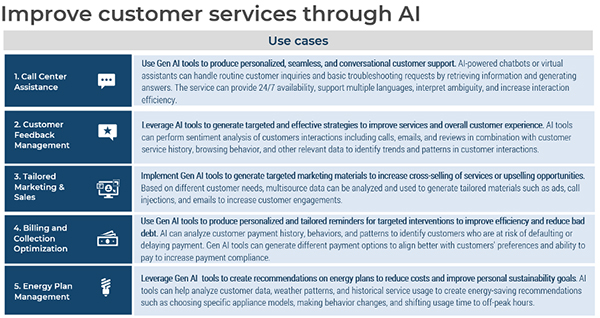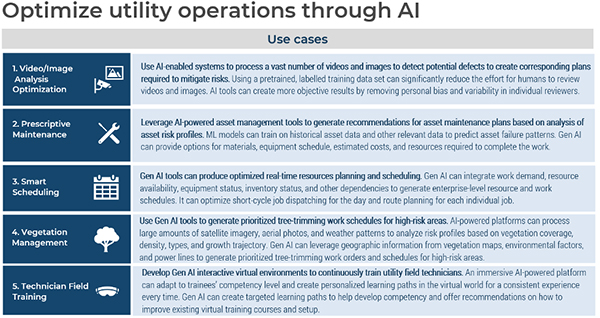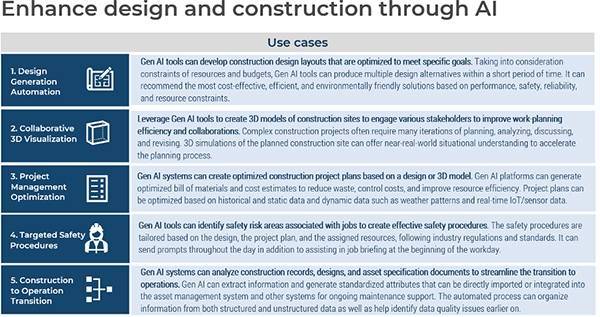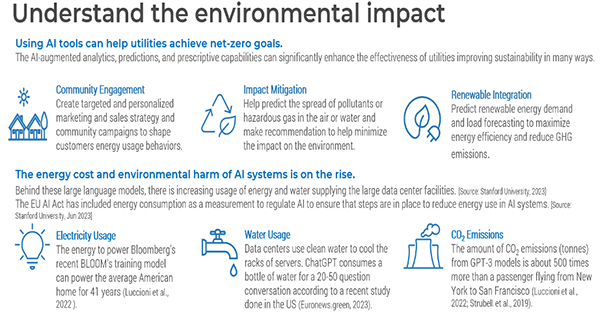Digital Currents: Steering water utilities into a resilient future.
By: Jing Wu (Principal Research Director at Info-Tech Research Group)
As the world grapples with increasing water crises, including record-breaking droughts in the western United States, water utilities, as providers of essential services, have a crucial role to play. Now more than ever, the infusion of digital transformation has become an indispensable strategy for these utilities, offering pathways to drive value across various facets of their operations.
What is the significance of digital transformation within water utilities? What are some challenges and potential opportunities?
Technology leaders within utility organizations are leveraging digital transformation to create value in various areas, such as:
To chart a path forward, technology leaders must become strategic partners with business leaders, proactively planning and transforming their operations to ensure future resilience. Info-Tech Research Group recently identified four transformational trends in its Water Utilities Trends Report:
AI’s role in utilities is not a recent development; for years, data scientists and engineers have employed machine learning (ML) models for system planning. However, the adoption of AI technologies has regained the spotlight recently, with utility tech leaders cautiously weighing its potential benefits against inherent challenges and risks.
AI is just one tool within the broader digital transformation toolbox. Despite the hype surrounding generative AI (Gen AI), utility leaders must collaboratively pinpoint value-driven applications and use cases rather than rashly investing in it. Establishing a strong foundational data infrastructure can accelerate the deployment of AI use cases at scale.
Nonetheless, the focus should remain on prioritizing business use cases to ensure we aren’t merely in technology for technology’s sake. Sometimes a mathematical model or basic process automation can achieve the desired goals without the need for sophisticated AI/ML algorithms.
AI’s potential applications in the water utility industry are broad and varied. Here are some ways AI can bring improvements:




For water utilities eager to incorporate AI into their digital transformation journey, several key challenges must be resolved first, including data constraints, lack of in-house talents, and evolving AI regulations.

Finally, water utilities must consider the environmental impact of AI models such as large language model (LLM) development and training, which is often overlooked and insufficiently scrutinized.

Digital transformation plays a significant role in enhancing business capabilities across diverse domains. For water utility leaders and their IT counterparts, a thorough grasp of the associated opportunities and risks is essential. By making informed decisions based on this understanding, they can adeptly navigate existing challenges and tap into the promise of digital transformation. In doing so, they fortify their resilience, ensuring they’re well equipped to thrive in an increasingly uncertain future.
From tradition to transformation Sequoia Brass & Copper has stood for excellence in American manufacturing. In this episode, we sit down with Kim MacFarlane, President of Sequoia Brass & Copper, to hear the inspiring story of a family-owned company founded by her father, built on craftsmanship, trust, and a relentless commitment to quality. Kim shares how she’s guided the company through the challenges of modern industry while honoring its heritage, and how the next chapter will be carried forward by her son Kyle. This is more than a story of brass and copper; it’s about resilience, innovation, and the enduring strength of family legacy. If you’ve ever wondered how tradition can meet the demands of today’s industry hit play and be inspired.